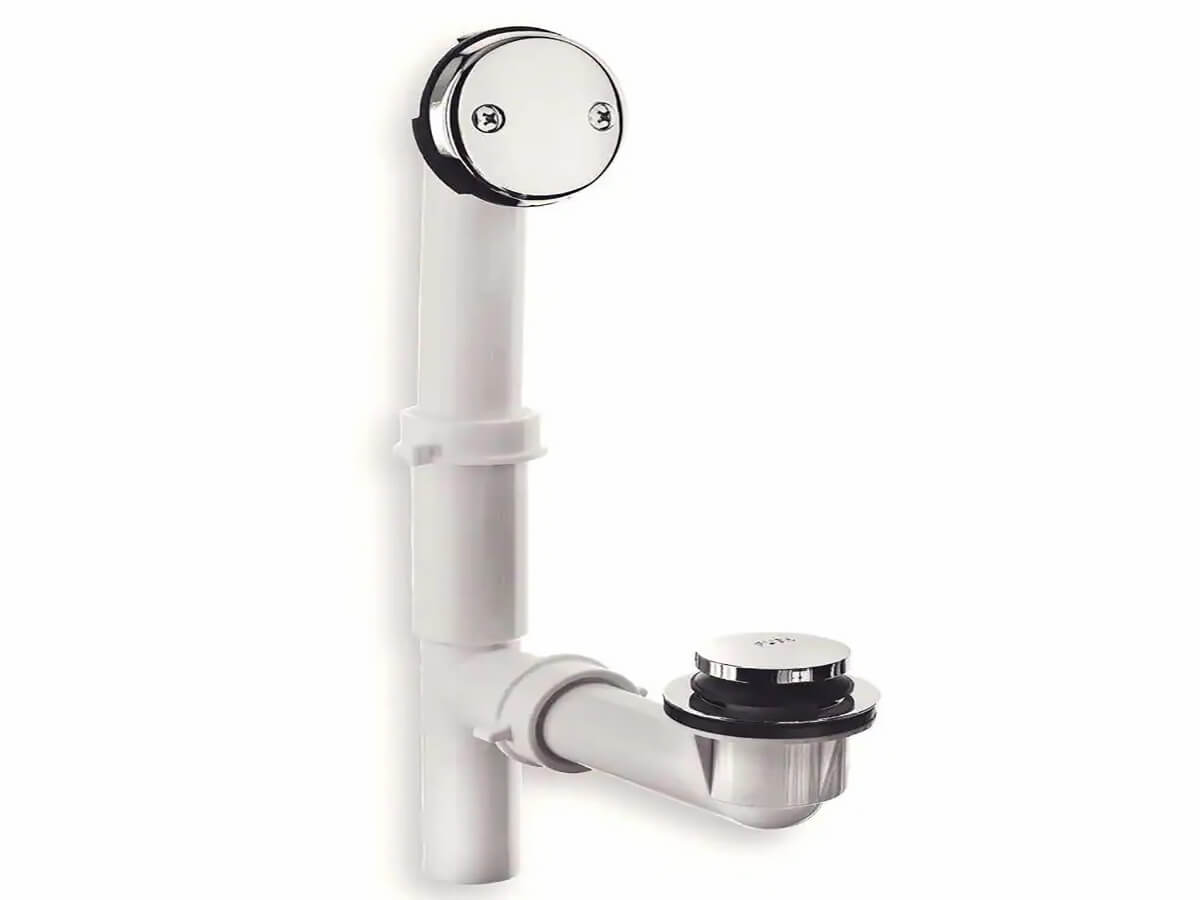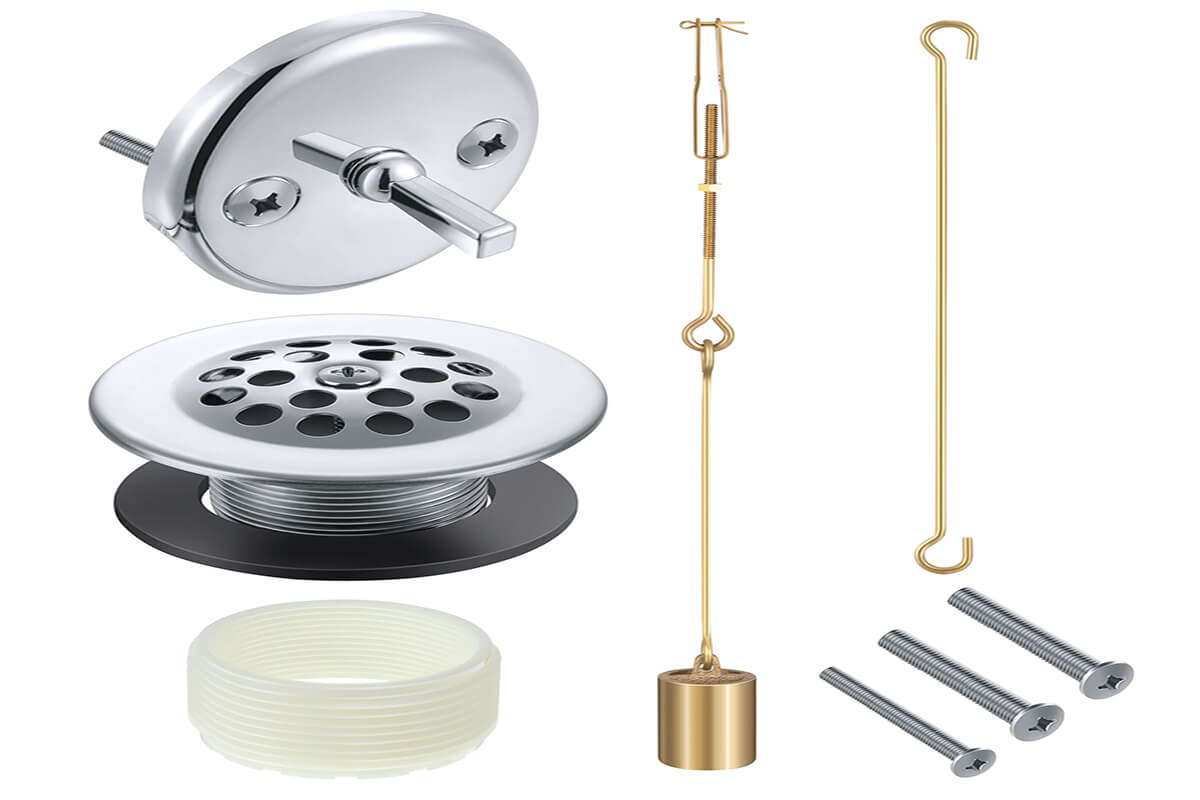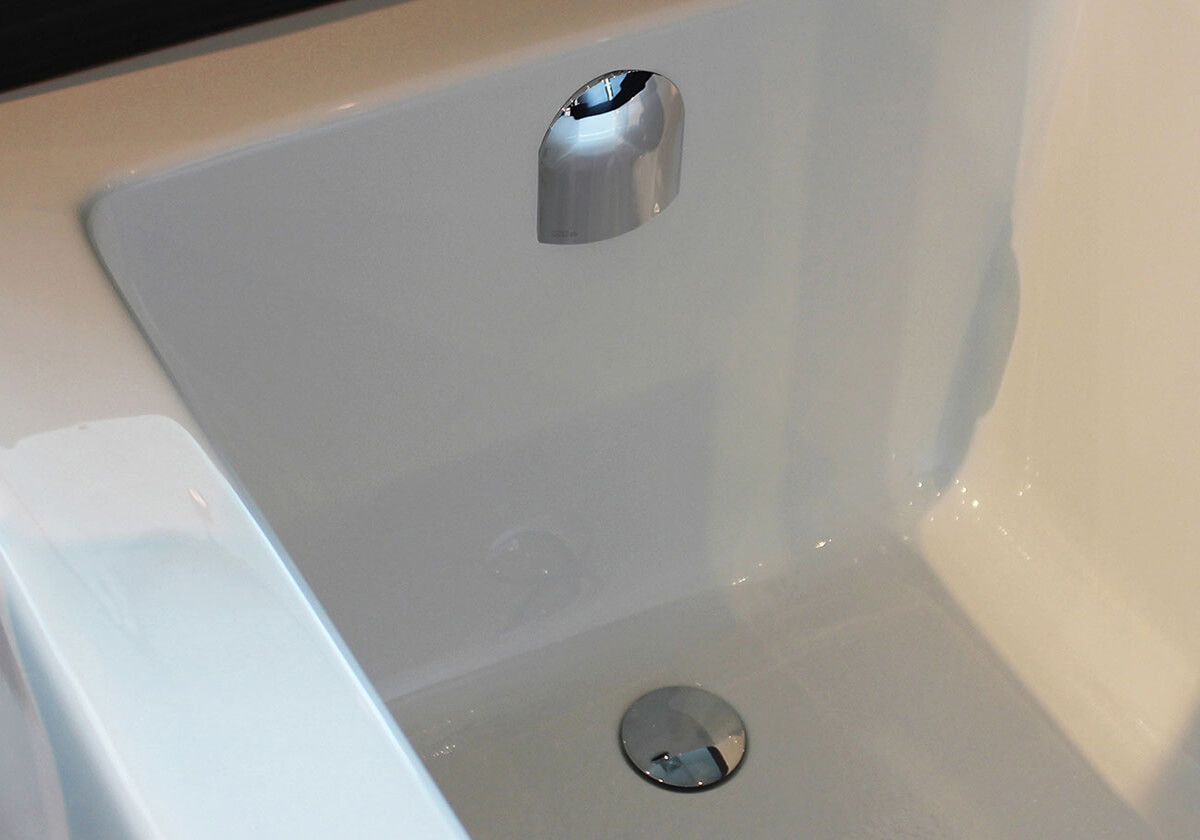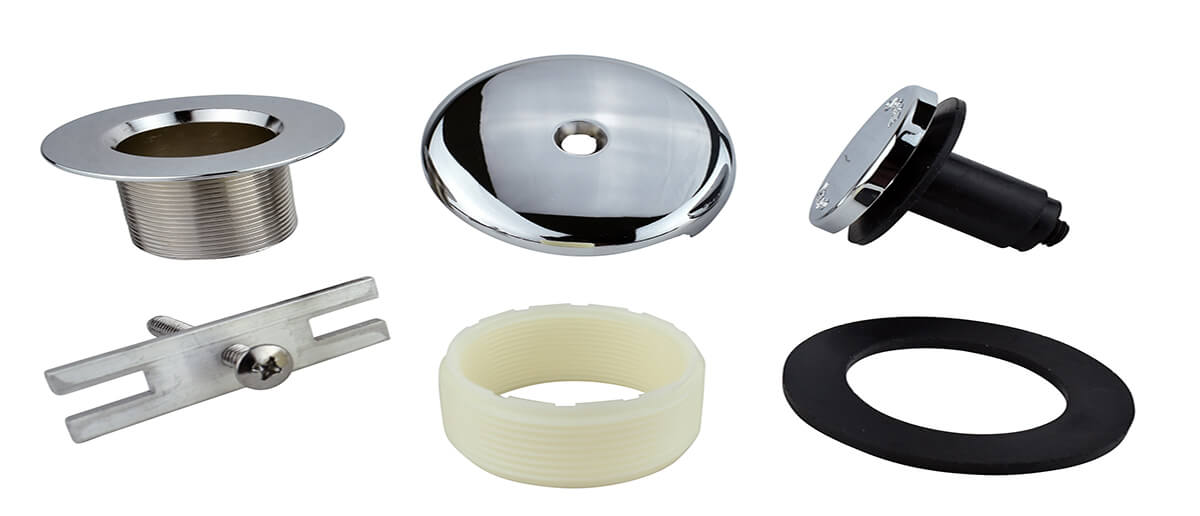The bathtub drain kit forms a complete bathtub drainage system to ensure smooth drainage of the bathtub. So how to choose a bathtub drain kit? In today’s guide, we’ll take a look at how to choose a tub drain kit. Read on to learn more.
1. Key terms
Choosing the right bathtub drain kit is important for both the functionality and aesthetics of your bathroom. Here are some key terms for understanding drain assemblies and wastewater drain kit parts:
- Tub Drain Assembly – The name given to a kit that includes all the metal and/or plastic pieces that screw together to form an overflow drain on the side of the tub or a waste drain on the bottom of the tub. This does not include waste pipes and overflow pipes.
- Waste and Overflow Assembly – The name given to a package that includes a bathtub drain assembly and an overflow drain and waste pipe.
- Overflow drain – An opening a few inches below the rim of the tub that allows excess water to flow into the waste pipe. Prevent flooding.
- Waste Drain – An opening used to drain water from the bottom of a bathtub.
- Overflow Drain – This vertical pipe carries water from the overflow drain to the main drain. It is built into the wall behind the tub and is not visible.
- Overflow Cover – The plate that covers the overflow drain on the side of the tub, located a few inches below the edge of the tub.
- Waste pipe – This pipe helps water drain from the bottom of the tub. It is a short tube that runs vertically under the tub.
- Tub stopper/stopper – Prevents or allows water to flow from the bottom of the tub into the waste pipe.
- Actuator – A metal device inside a drain pipe that controls how the drain plug opens and closes.

2. Things to note when choosing drainage components
When choosing a bathtub drain assembly, you need to consider:
- Assembly material: Brass, ABS, or PVC
- Lamp style: retro, modern, etc.
- Jig Finishes: Brushed Nickel, Polished Chrome, etc.
- Actuator Types: Cable Driven, Stroke Rod and Plunger, Stroke Rod and Rod
- Drain plug types: push-pull plug, pop-up plug, toe-pull plug, etc.
NOTE: To ensure proper installation, you will need to measure the overflow and tub waste volume.
3. Choose the right bathtub drain component
Choosing the right bathtub drain assembly is important for both the functionality and aesthetics of your bathroom. This assembly includes an overflow plug and a drain plug that work together to control the water level in the tub.
There are several factors to consider when choosing a bathtub drain component:
1) Bathtub wastewater pipe material
Bathtub waste pipes are available in different materials, including brass, PVC, and ABS. These materials offer varying degrees of durability and ease of installation. Depending on the layout of the tub and plumbing, you may need to make modifications or cuts to fit specific components.
These materials have two different methods of joining and materials that complement each other should be chosen. Specifically, all three materials (brass, PVC, ABS) can be connected using sliding fittings. However, you cannot use glue solvent to join brass pipes because glue solvent only works on PVC or ABS. Choose a material that is easy to work with and compatible with the design of the tub and existing plumbing in the bathroom.
2) Style and finish
The style and finish of the components should match the overall look of the bathroom. You have a variety of options to choose from, from modern, sleek lines and simple designs to more traditional designs with intricate details and ornate finishes.
Consider the color, texture, and style of existing fixtures and choose a style that complements them to accentuate the beauty of your bathroom. This is not a problem if you want to mix metallic finishes in your bathroom. Just make sure you do it intentionally.

3) Actuator type
The actuator type is the part of the assembly that controls how the drain plug opens and closes. They come in a variety of materials and styles, including levers, knobs, buttons, and even contactless versions. Make sure the actuator type you choose is easy to use.
- Cable-driven actuators are the most commonly used type due to their ease of use and durability. These components use a cable to open and close the drain and are usually located behind the tub. The cable connects to a lever or knob on the tub’s overflow plate, allowing easy control of the water flow. Installing this component type is very simple as the cables are already in place.
- The stroke lever and plunger assembly are popular and have a classic look. The trip lever assembly uses a lever mounted above the overflow plate to open and close a plunger that seals the drain pipe. The plunger is connected to a rod that controls its movement. Installation of these components is more complex because the rods must be the correct length and properly aligned before the components can be fixed.
- The travel lever and lever assembly uses a lever instead of a cable to open and close the drain. These rods are attached to a lever arm above the overflow plate and, when pulled back, allow water to drain out of the tub. These rods are designed with specific bends to fit correctly and function properly.
Travel rod and rod assembly systems require more precise measurements and installation than cable-driven assemblies and cannot be installed in the field. Additionally, they often require more maintenance due to their complex inner workings.
4) Overflow and bathtub waste measurement
While overflow drains and tub waste are purchased in standard sizes, there are other sizes to consider for your tub. These measurements include tub height, tub overflow depth, distance between overflow and drain, tub waste depth, and diameter.
Careful measurement of these components is critical to successful installation, as undersized or oversized pieces can cause water spills and other problems.
5) What is a drain plug?
When you use a drain, a drain plug blocks the drain to hold water and release the water when you want it to drain. The overflow drain and tub waste work together to control the water level in the tub.
When the drain plug is open, it allows water to drain out of the main drain pipe and prevents the water level from rising too high. When the drain plug is closed, it retains water in the tub and prevents it from draining until you open the drain plug.
There are different types of drain plugs, including:
- Push-pull plugs are the most basic type of drain plugs. They have a simple design that can be pushed down to seal the drain and pulled up to open the drain.
- The toe contact plug is a lift and rotation stop that operates simply by pressing down on the top with your foot. This may be a convenient option for people with limited mobility.
- The lift and turn stopper has a knob or handle that lifts the stopper out of the drain. This type of stopper is generally more durable than a push-pull stopper and is more difficult for children to open.
- A pop-up stopper has a stopper attached to a rod that lifts the stopper out of the drain. They are often used in bathroom sinks and are a great choice for those who want a more modern look.
- The Flip-it stopper is a new type of stopper with a small lever that flips over to seal or open the drain. They are easy to use and maintain, making them a good choice for those who want a simple yet modern look.
- Travel lever plugs are similar to pop-up plugs but have a lever that lifts the plug out of the drain. They are commonly found in bathtubs and showers and are popular with those who want a more traditional look.

4. Independent piping components
If you only want to replace specific parts of the drain assembly and don’t need the entire kit, here are some suggestions:
1) V-TOP bathtub stopper
The V-Top Tub Stopper is an excellent choice for those who want a reliable and easy-to-use stopper. It features a large 6-inch (15.24 cm) silicone plug that can be easily pushed down to seal the drain and pulled up to open it. The stopper is also designed as a flat absorbent cover so it can be easily removed for cleaning or access to the drain.
I highly recommend the V-TOP Tub Stopper to anyone looking for a simple and easy-to-use drain stopper.
2) XAJOON bathtub stopper
For those looking for a versatile, stylish, and durable drain stopper, the XAJOON Tub Stopper is a great choice. The stopper is made of high-quality silicone and fits most bathtub drains.
Overall, the XAJOON Tub Stopper is a great choice for anyone looking for a reliable and stylish drain stopper.
3) DANCO bathtub overflow plate with travel lever
If you are looking for a reliable and efficient overflow drain, I highly recommend the DANCO Tub Overflow Panel. The plate is designed to fit most standard bathtub drains and features a trip lever for easy operation. It’s made from durable, corrosion-resistant metal and will last for years.
5. Can the overflow drain pipe be replaced by myself?
You can replace your overflow drain if it becomes damaged or if you want to upgrade to a different style or finish. Make sure the new overflow drain you buy is the right size for your bathtub, as incorrect sizing can cause leaks or other damage to the bathroom.
Note: Replacing an overflow drain requires some plumbing skills and tools. Use the correct tools and follow the manufacturer’s instructions for the specific model of overflow drain you want to replace. If you are new to unclogging pipes, it is recommended to hire a professional plumber to complete the job.

6. Conclusion
This guide summarizes how to choose a bathtub drain kit and what to consider when doing so. After reading this article, I believe you are ready to choose the right drain kit for your bathtub. If you have further questions, please contact Hofensanitary for consultation.





Leave A Comment